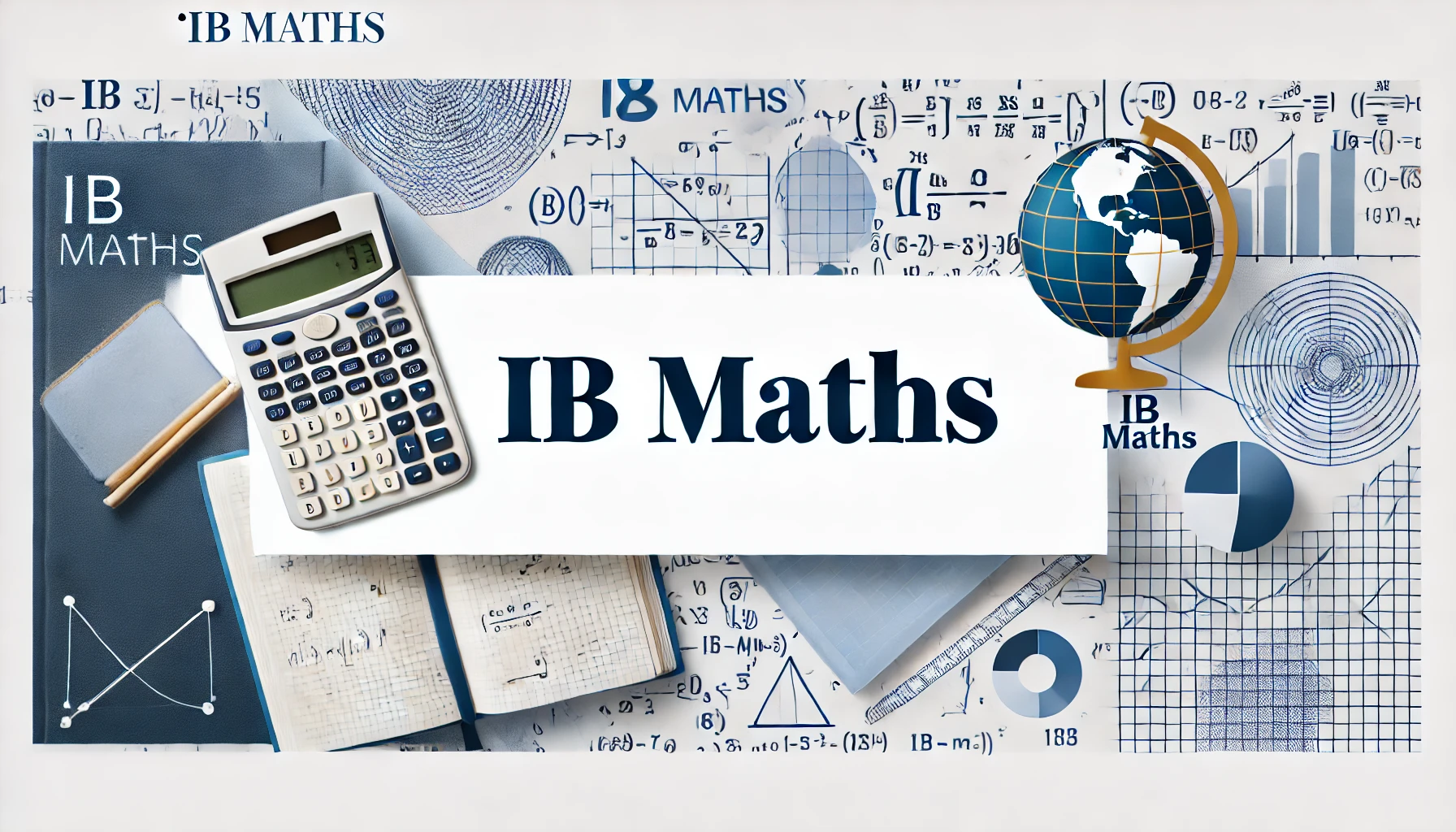

The IB Diploma Programme’s Mathematics: Analysis & Approaches (AA) Standard Level course is one of the most challenging yet rewarding subjects in the curriculum. Whether you’re passionate about numbers or just aiming for a solid grade, smart preparation can make a huge difference. This guide breaks down everything you need to know: from exam structure and assessed content to revision techniques, common mistakes, and the best resources to use.
Key Exam Information
Structure
The Math AA SL exam consists of two written papers:
- Paper 1: 90 minutes, non-calculator, worth 80 marks.
- Paper 2: 90 minutes, calculator required, worth 80 marks.
Together, these account for 80% of your final grade (with the remaining 20% from your Internal Assessment).
Question Types
A mix of short-response and extended-response questions.
- Paper 1 emphasises algebra, calculus, and manipulation skills since no calculator is allowed.
- Paper 2 integrates calculator use, so expect more data analysis, probability, and function-based questions.
Allowed Materials
- Paper 1: Pen, ruler, IB Formula Booklet only
- Paper 2: Same as Paper 1 + GDC (graphic display calculator)
Content Assessed
The exam covers five main strands:
- Number & Algebra: sequences, logs/exponentials, binomial expansion
- Functions: graphing, transformations, inverses, composites
- Geometry & Trigonometry: radian measure, identities, vector geometry.
- Statistics & Probability: mean, regression, normal distribution.
- Calculus: differentiation, integration, kinematics, optimization.
Assessment Objectives
IB sets out specific assessment objectives (AOs) for Math AA SL:
- AO1: Knowledge and understanding: recall of definitions, rules, and formulae.
- AO2: Problem-solving: applying mathematical techniques to familiar and unfamiliar contexts.
- AO3: Communication and interpretation: using correct notation, presenting steps clearly, and linking results back to the question.
- AO4: Technology: using calculators or software appropriately to explore, verify, and support solutions (especially Paper 2).
- AO5: Reasoning: constructing logical arguments, justifying results, and recognizing limitations.
How to Revise
- Work through the syllabus systematically. Check off each topic as you practice.
- Use past papers – the best preparation. Do them under timed conditions.
- Practice without a calculator. Sharpen algebraic skills for Paper 1.
- Get comfortable with your GDC. Know how to graph, solve equations, and run regressions quickly.
- Balance easy and hard questions. Build confidence with “easy marks,” but don’t avoid challenging problems.

Exam Techniques
General
- Read every question carefully. Many mistakes come from misreading small details.
- Show all steps. Examiners give partial credit through method (M) marks.
- Use clear and consistent notation.
Handling Difficult Questions
- Do not panic and cry! Underline each question and break it into smaller parts.
- Work backwards from the required format.
- Skip the hard questions and return if stuck. Don’t waste precious time!
Timing Strategy
- Paper 1: 90 minutes for 80 marks, which equates to about 1 minute per mark.
- Paper 2: Same rule applies, but factor in calculator keystrokes.
- Always leave the last 5–10 minutes for checking.
Key Concepts to Know
- Trig identities and transformations (appear everywhere).
- Differentiation rules and applications (tangents, optimization).
- Integration basics (area under curves, kinematics).
- Probability distributions (normal distribution in particular).
- Functions (domain, range, composite and inverse).
Common Mistakes
Even after a month of hardcore revision, you can lose marks in the Math AA SL exam because of small but costly errors. Being aware of them can help you avoid repeating the same traps.
- Misreading the question: Words like hence, show that, or give your answer in exact form are not decoration; they tell you exactly how examiners expect you to solve and present. Skipping these cues often leads to unnecessary lost marks.
- Forgetting exact values: Trigonometric values such as sin(/6), cos(/3), or tan(/4)are assumed knowledge. Forgetting them can block you from progressing in otherwise straightforward problems.
- Skipping working steps: Examiners award method marks, not just final answers. Writing down only the answer, even if correct, can mean you lose partial credit if your method isn’t visible.
- Poor algebraic manipulation: Sign errors, forgetting brackets, or mishandling fractions are extremely common. These slip-ups can snowball into entirely wrong answers, even if you understood the concept.
- Time management failures: Spending 20 minutes on one Section A question means you might leave five other, easier questions unanswered. Do not underestimate how quickly 90 minutes pass.
- Messy presentation: Examiners have hundreds of exam scripts to read after a long day of work, and your paper might just be at the bottom of the pile. Crossed-out scribbles, inconsistent notation, or unclear graphs make it harder for examiners to award marks. Therefore, neat, logical structure is not just for show, but it also maximises your score.
- Not using the formula booklet effectively: Some students forget the formula booklet exists, wasting time deriving formulas they could have looked up. Others panic because they don’t know where to find what they need. Familiarise yourself with it before the exam.
By recognising these mistakes now, you can actively train yourself to avoid them in practice papers, giving you a big advantage on the real exam day.

Resources to Help Prepare
You don’t need to revise alone! Plenty of excellent resources are available:
- Past Papers & Markschemes (you can get these legally from your school)
- IB Formula Booklet: Know it inside out, especially where formulas are located.
- Textbooks from IBID, Haese, and Oxford have concise explanations and are aligned to the syllabus.
- Utilize various online resources: Revision Village, Christos Nikolaidis, and IBMathsResources.com are a few.
- If you don’t like reading, you can also learn by watching on YouTube: Organic Chemistry Tutor, IB Maths Tutor
Using a mix of textbooks, online platforms, and exam practice will give you the best balance of understanding and exam technique.
Final Words of Advice
Success in IB Math AA SL isn’t about being a genius; it’s about being prepared and exam-smart. To maximise your performance:
- Secure all the easy marks first.
- Stay calm and logical on tough problems.
- Always write out working! Don’t let careless presentation cost you marks.
With consistent practice, strong exam technique, and the right resources, you’ll walk into the exam confident and ready to perform your best.





